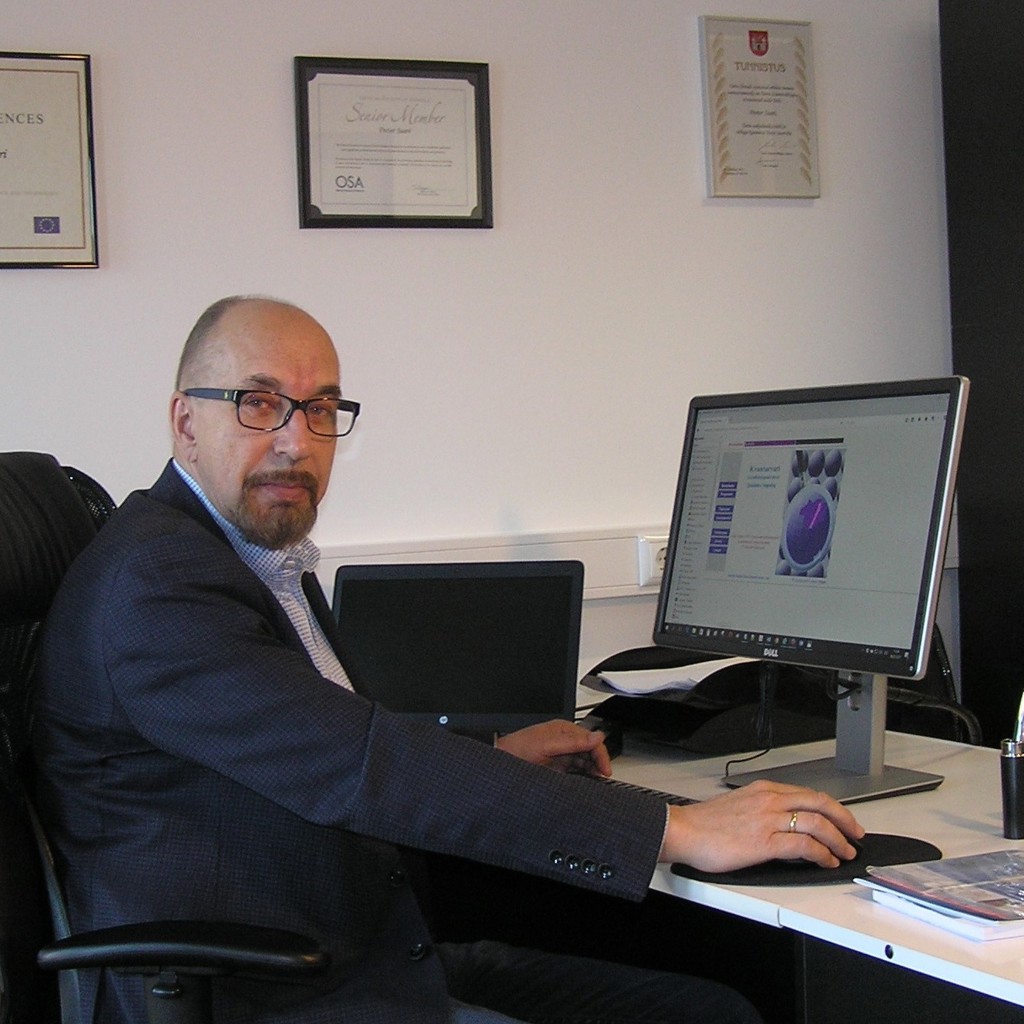Peeter Saari
University of Tartu, EstoniaFor pioneering contributions in the areas of non-diffracting localized waves, ultrafast optics and holography, and optical spectroscopy of low-temperature solids, including discovery of hot luminescence.

In Peeter Saari's view, curiosity is the driving force behind all science. That quest has illuminated his career as a professor of wave optics and an institute director at the University of Tartu, the premier site for higher education in his homeland of Estonia.
Born in the waning days of World War II, Saari grew up in a country that had been annexed by the Soviet Union. Both his parents were schoolteachers, and they inspired his inquisitiveness about the natural world and technology. “Before the Soviet occupation of Estonia my father wrote regular do-it-yourself columns for a youth magazine,” he says. “During all my childhood he encouraged, helped and instructed me to experiment with technical toys, with electricity and chemicals, to build various mechanical and electrical devices, paper gliders, etc.” He also learned basic electronics assembly.
As a high school student, Saari initially entertained daydreams of studying electronics at a technical university in Tallinn, Estonia's capital. Shortly before graduation, however, he read The Evolution of Physics, the 1938 popular-level book by Albert Einstein and Leopold Infeld, and the theory of relativity sparked his imagination. His physics teacher then convinced him to study the subject at the University of Tartu, Estonia's most prestigious university.
That high school teacher mentored Saari through his first year at the university, a rough time because his parents were killed in an automobile accident. Following his mentor's instructions to set firm priorities and stick to them, Saari earned straight A's and graduated cum laude in theoretical physics.
In retrospect, Saari says that the “exact sciences” were a good choice for a career in the Soviet era, since they were more resistant to political pressure than other professions. “And even though life was kind of poor, Moscow financed the exact sciences relatively very well,” he adds.
Besides, the halls of physics rang with news of a new discovery: the laser. Just as Saari was graduating from the university in 1968, the institution purchased its first laser, and everyone in the department went to take a look at it. Saari had been more interested in relativity than optics, but an assignment would change that.
During his fourth year of university, Saari began to work in at the Tartu-based Institute of Physics, which then belonged to the Estonian Academy of Sciences. He was given a tough experimental problem: to record a supposedly extremely weak light emission of impurity crystals, dubbed “hot luminescence.” His supervisor, the late Karl Rebane, and another theorist at the institute, Vladimir Hižnjakov, had predicted the existence of such a phenomenon.
For two years, while still taking university classes, Saari spent his evenings and weekends performing tests that yielded only negative results. Finally, drawing upon his teenage electronics experience, he built a photon-counting apparatus—more than a decade before photon-counting detectors became integral to highly sensitive optical spectrometers. That instrument led to the team's confirmation of the existence of hot luminescence, which was published in Solid State Communications in 1969. It also started Saari's career in optics.
“In science in general, if you are engaged in a problem, you start to like it,” he says.
Saari has spent his career at the Institute of Physics, first under the Estonian Academy of Sciences and then, once Estonia regained its independence and basic research institutions were amalgamated with institutions of higher education, under the University of Tartu. Several times he has changed his research interests. From his original focus on molecular spectroscopy and solid-state physics, he moved on to chemical physics, then characterization of ultrashort light pulses, holography and optical data storage, and finally to wave optics. He loves both theory and experimentation, especially with the prospect of practical applications. Most recently, he says, he's been studying “non-diffracting and other structured light pulses due to their exotic—even startling—propagation properties.”
Saari joined OSA in the 1990s, once Estonia was free, and he realized the instant benefit of gaining access to the Society's journals. In the Soviet era, foreign journals were hard to come by. Several of his doctoral students have also joined OSA.
The Nobel laureate and OSA Honorary Member Nicolaas Bloembergen is Saari's scientific hero. In the course of a post-conference visit to Boston, USA, in 1978, he met the Dutch-American physicist, who invited him to his office for a long chat. Bloembergen “was a perfect example of the creative scientist to me,” Saari says.
Now that Saari is a grandfather, he has a new generation to inspire. At his most recent family holiday gathering, he taught his 7-year-old granddaughter the multiplication table.
Profile written by Patricia Daukantas, Science Writer/Editor
